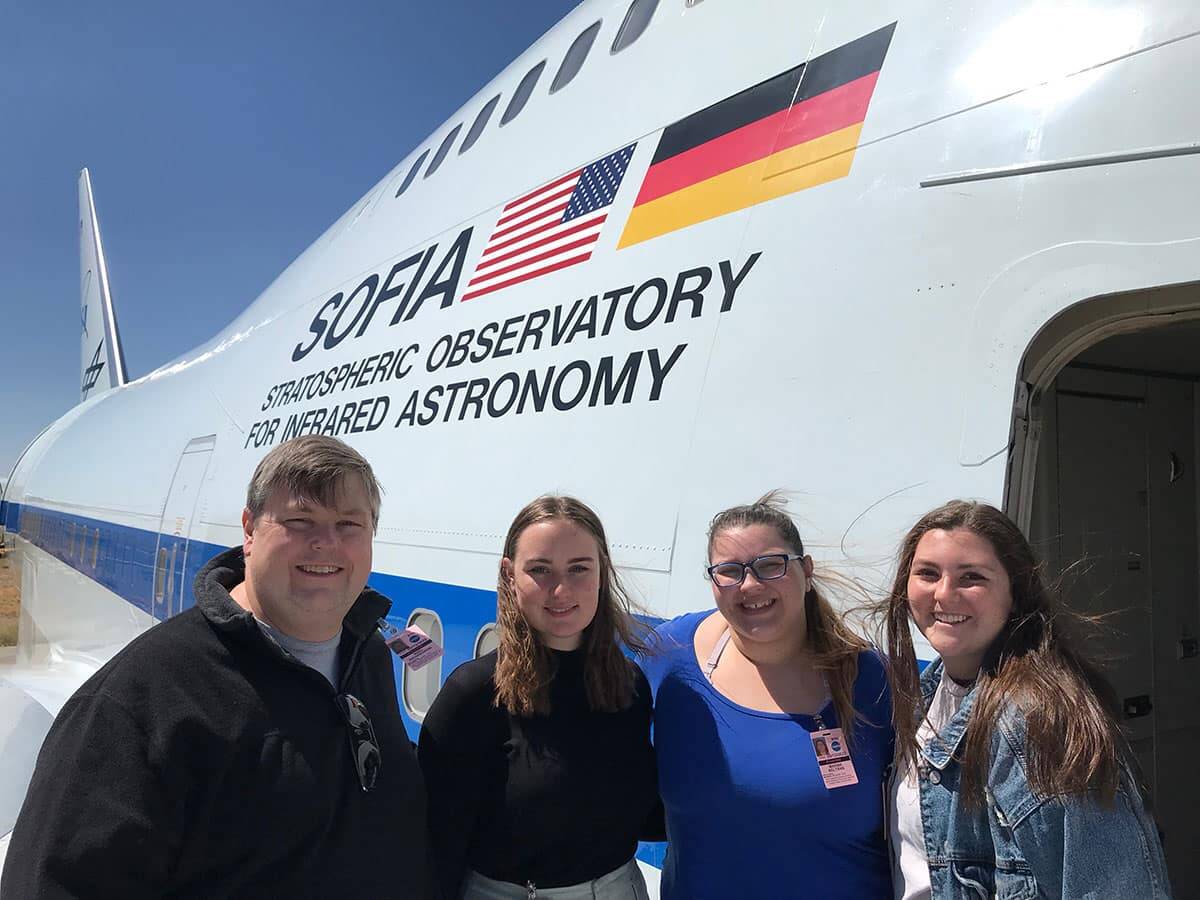A bright and enthusiastic astronomy student, Marina Beltran of Renton received the supremely rare opportunity to fly aboard the Stratospheric Observatory for Infrared Astronomy, a flying NASA observatory that has been used to document occurrences in space and to collect data from 43,000 feet in the air.
“My mom was like, ‘yeah, we’ll make sure you can go as long as it doesn’t interfere with your research program.’ So that was one of the contributing factors because I would drop almost everything to just go,” Beltran said of her trip on the SOFIA.
Beltran, a 2019 graduate of Lindbergh High School, was one of the chosen few students at Embry-Riddle Aeronautical University to get to travel on and observe the scientific data on the SOFIA. She was also one of the last to do so — NASA announced in April 2022 that the project would be retired and decommissioned by the end of the year.
An astronomy major with a minor in mathematics and meteorology, Beltran was able to observe the May flight of the SOFIA with two other students and Dr. Noel Richardson, an assistant professor of physics and astronomy at Embry-Riddle. According to an Embry-Riddle news report, Richardson had received two SOFIA grants to help fund student research and allow for two 10-hour flights aboard the plane.
“When we went on, they were taking data of the moon for a legacy project, which is pretty cool,” Beltran said. “So they’re looking to see if they could find signatures of water on the moon and because at this certain wavelength of observing, you can tell if it’s water, or if it’s something similar to water and they’re trying to map the moon out. It was cool to see what they were doing.”
Of the flight itself, Beltran said that there was an area of the modified 747 where she and the other other Embry-Riddle students, Alexis Lane and Teagan Laws, were able to sit like in a commercial airplane, but that the majority of the craft was filled with stations for computers and monitors, along with the telescope itself.
“There’s a place for the people on the telescope who had their monitors to control the telescope and make sure everything was working. And then right next to them was the station for the scientists to make sure that the data that they were getting looks good,” she said.
Beltran’s main experience on the SOFIA, which ended up being 20 hours over the course of two nights, was to observe the data that the NASA scientists were collecting. But she was also able to talk to them for some sage advice.
“It was really nice, because I got to mostly ask them like, ‘Oh, how did you get to doing this?’ It was a pretty fun experience,” said Beltran, who explained that the first-hand experience of seeing how the data is collected has helped her in her own studying and research. “It was just cool to see it done. And talking to the scientists was also good for the future, because this fall, I’ll be applying for grad school, so learning how to choose a grad school, what to look for in a program, or other alternatives to grad school in particular was really good.”
Beltran had always been interested in astronomy and “loved looking at the stars,” with math and science being her favorite subjects in school growing up. She hopes to one day be in a position that helps other women in STEM.
“Ultimately, my biggest goal would be to put myself in a position to help primarily young women be able to achieve what they want to do,” she said. “And yeah, it would be really cool to make new discoveries in the field and to get my name out there, but I want to be in a position to help women in STEM do what they want to do.”
When discussing her grad school plans, Beltran said that she wants to do more astronomical research and to teach at a college somewhere on the West Coast.
“I do kind of want to stay in the area. I miss being home. There are certain places I’m looking at that are near family,” she said, referring to the differences between her college life in Prescott, Arizona, and her hometown of Renton.
“I always miss the Pacific Northwest. The weather, the coffee, the culture. I didn’t realize how much of a coffee snob I was or even a caffeine snob I was until I went to a college that wasn’t near Seattle.”




